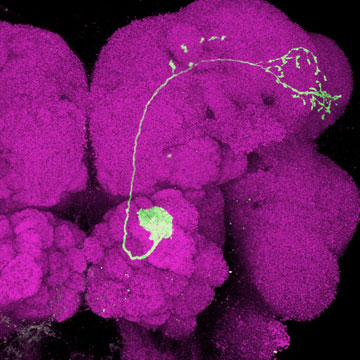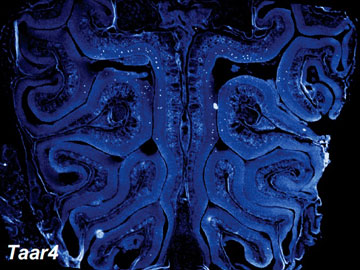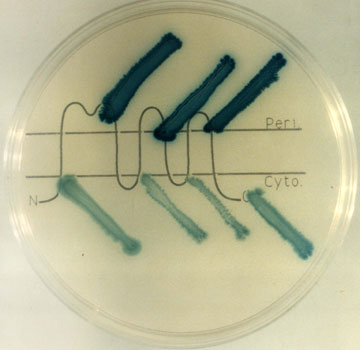When AIDS was first observed in 1981, neither doctors nor researchers knew what was causing the symptoms they were seeing. The cluster of symptoms had been observed in certain groups of people, and much of the research and therapy was aimed primarily at those populations. Only in 1983 did researchers Robert Gallo and Luc Montagnier independently discover that a retrovirus, what we now know as HIV, caused the illness. And within 10 years of discovering HIV’s link to AIDS, researchers delivered the first successful therapy to manage the disease.
“That’s a huge success story,” said Rachel Wilson, professor of neurobiology at Harvard Medical School. “Such rapid development of a therapy doesn’t happen often.”

It was a success story not only for the researchers who developed the antiretroviral therapies, but also for the basic research scientists who had worked for years prior to the appearance of AIDS. These scientists had no idea that retroviruses were relevant to humans because up until the linking of HIV with AIDS, scientists believed there were no human retroviruses. They were simply curious about the viruses that could produce DNA from RNA.
Quenching the thirst
“The important thing is not to stop questioning. Curiosity has its own reason for existing.” Albert Einstein
“Simply curious,” “Just wanted to learn,” or “Wanted to explore.” These are common answers scientists provide when asked about their line of research. After all, curiosity is perhaps one of the defining characteristics of our species, and exploration through the scientific method is a powerful way of satisfying that curiosity. These basic research scientists spend years solving problems on a microscopic level and figuring out the minutiae of cellular mechanisms. Often in a university setting, the main objective of scientific inquiry is to explore and understand how life works.
“In a day and age when a lot of the Earth has been explored and even when parts of the moon have been explored, the human brain remains largely mysterious territory. So it seemed like an exciting field to enter,” said Wilson.
She doesn’t work with the human brain, though. Rather, she and her colleagues study the brains of fruit flies. More specifically, they study the flies’ olfactory system, which, with its sensory and cognitive connections, serves as an ideal entry point to study the nervous system.

Like Wilson, countless researchers enter their fields motivated by the thrill of discovery.
“Theoretically, I guess you can figure out everything about everything,” said Steven Buratowski, professor of biochemistry at HMS, who studies gene expression mechanisms in yeast, “but I don’t think an endpoint can ever really be reached when conducting basic scientific research. A lot of these things that are curiosity driven are really fundamental questions about basic biology that you have to understand so that you can go on and try to address some of the real clinical problems.”
While curiosity-driven research doesn’t necessarily have a defined, practical endpoint as a goal, what is observed in a simple organism, such as yeast or fruit fly, often translates to humans as well—but these findings may not necessarily mean a cure for a disease or a therapy for a biological condition.
This uncertainty about research translation has several lawmakers wondering if curiosity-driven projects deserve funding and support. Some have gone so far as to publicly mock projects that investigate mechanisms in simpler organisms, such as yeast and worms, citing lack of translational value to humans as the main concern.
Contrary to the steady climb from the 1970s through the early 2000s, the National Institutes of Health budget has begun to plateau, with threats of cuts looming every fiscal year. In fact, just in the past 10 years, the percentage of grants funded by the NIH has dropped from 32 percent to 17 percent, causing many to fear that basic research may indeed be in jeopardy.
To devalue curiosity-driven research simply because it can’t yet promise a specific application, however, is a mistake, scientists say, because basic research is the driving force behind all applied research.
“The value of basic research lies in its intrinsic ability to unravel the mysteries of life,” Wilson said.
Giving in to serendipity
“Curiosity is lying in wait for every secret.” Ralph Waldo Emerson

When Jon Beckwith, professor of microbiology and molecular genetics, and his team isolated the first gene from the bacteria E. coli, they “simply wanted to see if it could be done.” Even then, the potential of this discovery was not completely clear.
Soon after this feat, Beckwith and his colleagues warned against the dangers of genetic engineering, a field still in its infancy, but thanks to their work on how to isolate the gene, genetic engineering left the realm of science fiction and became a reality. Beckwith’s discovery led to recombinant DNA technology in the 1970s, a development that gave birth to modern biotechnology.
Beckwith knew “it was huge,” but he could not have predicted the implications of that moment in his lab decades ago. This is true for most basic science: it is impossible to predict what is and what isn’t going to have translational value.
“You can’t know in advance what those implications are,” said Cliff Tabin, head of the department of genetics at HMS. “It’s just like when you write a grant. I write a grant for five years—that’s the typical NIH length of a grant. I don’t really know where that work will lead in five years. Nobody does.” In other words, basic research means allowing in serendipity.
Harvard’s Office of Technology Development (OTD) is responsible for connecting such serendipitous discoveries to potential industrial and clinical applications.
“Our current system of matching researchers with industry is very important,” said Michal Preminger, executive director of OTD. “Industry R&D would otherwise reach a level of exhaustion of ideas due to a very narrow focus. Most of what we do is to enhance knowledge.” And that benefits researchers and industries alike.
All applied research, according to Preminger, is made possible and builds on foundational, or basic, research. Almost all products and tools that have an impact on human life, from iPods to airplanes, rely on scientific principles and properties that were originally revealed through curiosity-based research.
Alfred Goldberg, HMS professor of cell biology, is one such researcher. His basic research led to groundbreaking clinical applications. What began as a simple investigation into the mechanisms of muscle loss has flourished into the development of a drug that inhibits the effects of multiple myeloma, a rare blood cancer.
Over the years, Goldberg and his colleagues have founded a company, coordinated with pharmaceutical companies and, most recently, won the $250,000 Warren Alpert Foundation Prize for translating basic research findings into beneficial clinical use.
According to Stephen Liberles, assistant professor of cell biology at HMS, “You need to have the basic research that’s the engine that really drives the new layer, the new levels of discoveries that we haven’t had yet. If you nip that in the bud, you’re basically killing all innovation.”
Liberles, who studies olfaction in mouse models, had the opportunity, with help from OTD, to transform a serendipitous moment. A graduate student in his lab made the discovery that an olfactory receptor in mice and rats was activated by a chemical found in the urine of many carnivores. The stimulation of this receptor caused what is known as avoidance behavior in the rodents, a natural response given that mice and rats are often prey to certain carnivores. It turns out that this chemical is also safe and inexpensive, and may have practical use as a rodent deterrent both in households and commercial food storage areas.
“We have now filed a patent and talked to a few companies that might be interested in this and this is something that we did not at all anticipate,” said Liberles.

Fueling education
“Cutting off fundamental, curiosity-driven science is like eating the seed corn. We may have a little more to eat next winter but what will we plant so we and our children will have enough to get through the winters to come?” Carl Sagan
Liberles, Tabin, Wilson and Buratowski are, like most of other basic researchers in the U.S., academics. Universities house the vast majority of basic research programs, where labs teem with students from all levels of post-secondary education. The university is, ultimately, an incubator of innovation and creativity. The constant flux of people and ideas naturally contributes to forming new questions and methods of experimentation.
Particularly in the U.S., the university system has been successful in attracting talent. People from around the world come here to learn and, in turn, contribute to common scientific knowledge. To limit this ultimately puts universities—global powerhouses of education—at risk.
“The moment you pull out of that, and you don’t give grants to people, they will leave science,” said Tabin. “They won’t be able to maintain their research. Their labs will collapse, and you’ll lose leaders of the next generation. And we can’t afford to do that.“
“When the government gives out grants, it is not just supporting the recipients, it is supporting the whole system,” said Robert Kohler, professor of history and sociology of science emeritus at the University of Pennsylvania. “It’s the social system that has enabled the U.S. to become a superpower—it’s the publishing of studies and the career reward for scientists. These have led to more inventions and discoveries to give the US its global status.”
But ultimately, separating basic research from applied or translational research is a false distinction. The two are intrinsically connected.
“They must stand hand in hand,” said William Chin, HMS executive dean for research, and a strong proponent of collaboration between basic and translational research. “It certainly takes a village to create the things that we need. I don’t think you can get to our goal without both working well with each other.”
Preminger, whose role at HMS is to engage industry to support academic research, agrees. “Basic science feeds into the industrial process,” she said, “and that collaboration is really critical to make both more productive.”
Many of these collaborations will yield practical applications, and many won’t. And we never know which are which.
“I would say it’s the rule of research,” asserted Buratowski. “It’s always impossible to predict when the research is going to pay off.”


